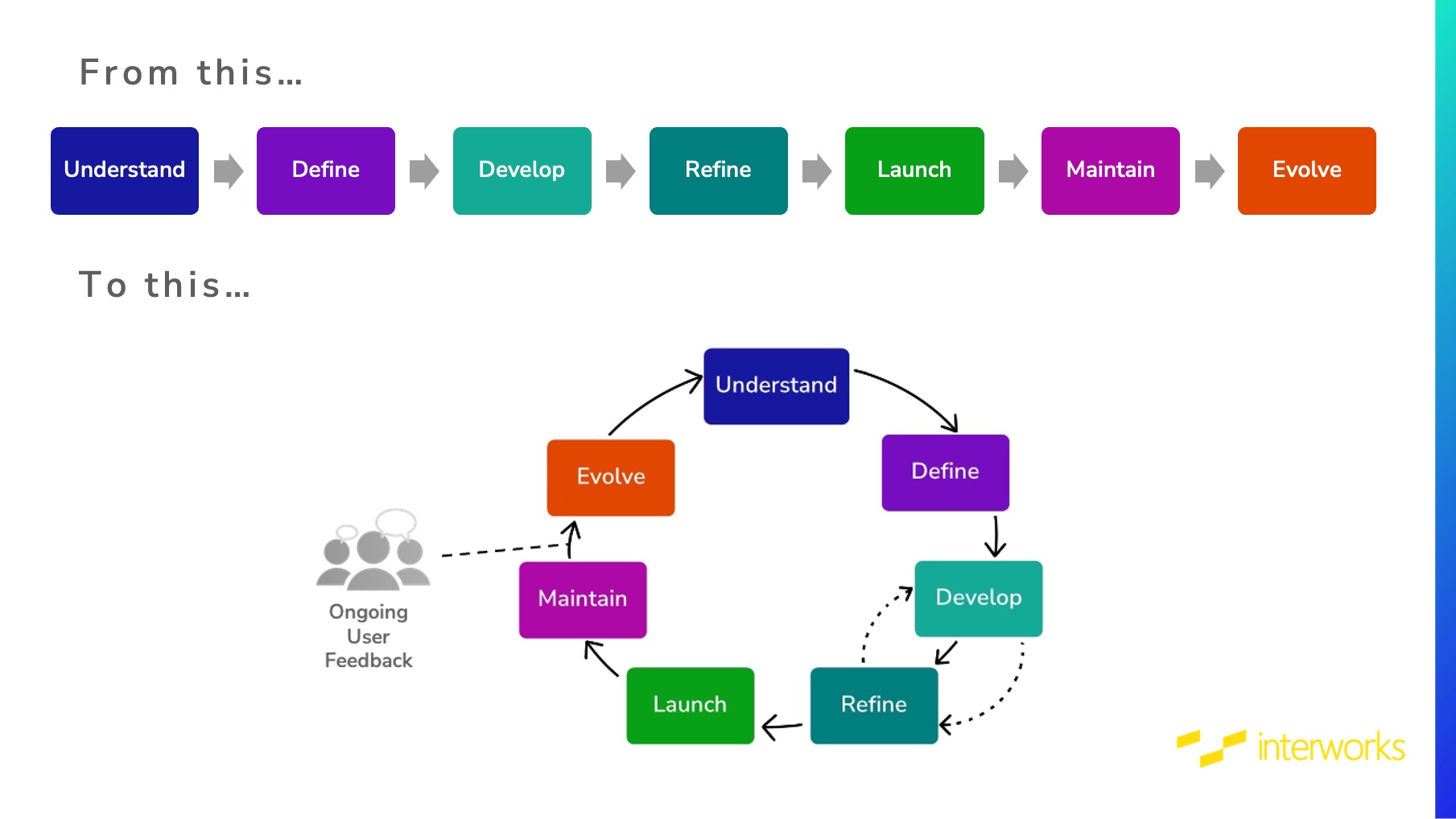If you’re new to User-Centered Dashboard Development (UCDD), please check out the earlier posts in this series to get acclimated, found at the bottom of this post, then come back here!
We have finally made it to our final phase of the UCDD Framework: Evolve! The goal of this phase is to identify improvements through ongoing user feedback and iterate to the next version.
Evolution of our dashboard solution is one of the biggest reasons why UCDD stands out from the old ways of development. Typically, when we build something, we publish to the Server and hope it works for a while, then we move on to the next thing. But by staying in tune with our users through the Maintain phase and gathering their ongoing feedback, we can discover ways our dashboard can actually evolve with the changing needs of the business. So instead of scrapping it and starting over, we can use our existing dashboards as foundations for the next evolutions of our analytics.
So, instead of looking at our process as linear – we can think of it as a cycle. As we discover ways to evolve our dashboard to the next level, we will naturally be pushed back to our first phase, Understand, as we seek to fully understand our users’ new problem space:

As we listen to the feedback from our users, we have several steps we can use to determine what feedback gets turned into new features for the next versions of our dashboard:
- Collect user feedback
- Analyze it – is this feedback that represents our user base?
- Prioritize it – is it critical or a nice to have?
- Assign to our dashboard’s Product Roadmap as a new feature
A Product Roadmap could be something as simple as a bullet point list of things you want to add/change about your dashboard to something more complex like a full Gantt chart with feature descriptions, tech requirements and assignments of who will do what.
My advice here is to start small and work your way up. Don’t get burdened by trying to do things overly complicated right now. Just begin to track your user feedback and see how you can incorporate small changes at first, and then you’ll discover ways you can fully evolve into upgraded versions.
The most important thing in all of this is to stay connected with your users. This is user-centered dashboard development after all. If you continue to grow and nurture your partnership with your users, you’ll find a more symbiotic way of working together to deliver superior dashboard results.
And that is that – we’ve now covered all seven phases of the UCDD framework and process. I hope you learned something new and helpful that you can use in your day to day work. If you want to learn more about UCDD check out this webinar replay or our full 8 hour workshop for BI teams.

